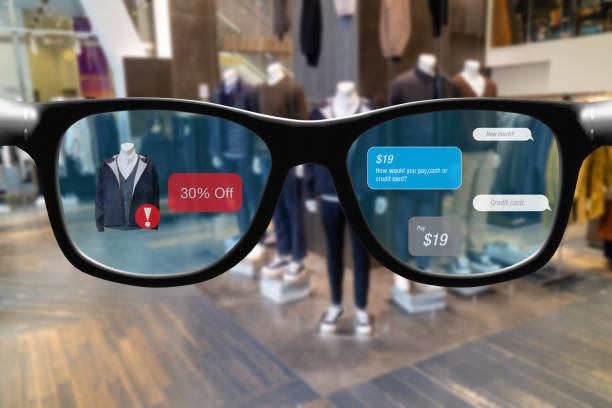Traditional communications methods, while still essential, no longer cut it in an era of digital transformation. Augmented reality has become a powerful tool that is revolutionizing the way businesses engage with customers, employees, and stakeholders. From marketing to training, product demos to team collaboration, AR is enhancing customer experiences, boosting employee productivity, and streamlining operations.
The marketing landscape has shifted dramatically in recent years, and customers now expect more than just passive advertisements — they want interactive experiences. AR offers businesses a unique way to grab attention, enhance product discovery, and foster deeper engagement.
AR transforms static print materials such as brochures, posters, and business cards into interactive pieces of content. With a simple scan, these materials come to life with videos, animations, or even direct links to your website, creating a dynamic bridge between offline and online communication. AR also turns marketing campaigns into games, creating fun, shareable experiences that encourage engagement.
AR isn’t just for customers — it’s also an incredibly powerful tool for improving internal communications. Employee training, internal presentations, and remote collaboration all benefit from AR’s immersive and interactive capabilities. Traditional training methods often rely on static manuals or videos, but AR takes this to the next level by offering hands-on, interactive learning experiences. Industries including manufacturing, health care, and aviation are already using AR to train employees by simulating real-world scenarios in a controlled, virtual environment.
Customer service and support have always been key aspects of a successful business, and AR is enhancing these services by making assistance more immediate and effective. When customers face technical issues with products, AR can help them resolve problems instantly. By using their smartphone or AR glasses, customers can access step-by-step instructions overlaid directly onto the product they are working on.
AR allows for virtual customer support, and experts can guide customers through issues in real time. By using AR, businesses provide on-demand, visual assistance without the need for in-person visits, improving both efficiency and customer satisfaction.
For businesses that sell products, especially in retail and real estate, creating immersive virtual experiences can be a game changer. AR provides customers an opportunity to explore products or spaces virtually, without having to visit a physical location. AR allows customers to digitally “try on” products, such as clothing, eyewear, or even makeup. This has been particularly successful in the fashion and beauty industries, where customers can see how a product looks on them before making a purchase.
By 2025, augmented reality is set to transform industries and everyday life through innovative trends:
- Enhanced AR glasses: Lightweight, everyday-use AR glasses are becoming more common, with products such as Apple Vision Pro and Meta Ray-Ban Stories leading the way. These devices aim to integrate seamlessly into daily activities, offering features including hands-free navigation and interaction.
- AI-driven personalization: AR will increasingly utilize artificial intelligence to create tailored experiences. For example, AR apps may recommend products, such as makeup shades or furniture, based on user preferences and contextual data.
- WebAR and accessibility: WebAR eliminates the need for dedicated apps, allowing AR experiences directly through web browsers. This approach broadens accessibility, engaging users across platforms.
- Health, fitness, and education applications: AR is reshaping health care with applications including surgery guidance and therapeutic tools. In fitness, virtual trainers offer real-time feedback. Educational institutions are embracing AR to enable hands-on learning through virtual labs and historical simulations.
- Entertainment and social experiences: AR continues to innovate in gaming and entertainment, delivering immersive environments and personalized interactions. Social applications of AR allow for dynamic and expressive digital avatars in virtual spaces.
These advancements illustrate how AR is poised to deepen its integration into both professional and personal contexts, making it a transformative force in 2025.
Augmented reality is no longer just a futuristic concept — it’s a powerful communications tool that businesses are using to enhance engagement, improve customer experiences, and streamline internal operations. By embracing AR technology, companies provide immersive, interactive, and personalized communication that resonates with both customers and employees. Whether it’s through innovative marketing campaigns, efficient employee training, or transforming the customer support experience, AR is an investment that can take your business communications to the next level.
As AR technology evolves, the possibilities for business communication will only expand. The businesses that embrace this technology early will not only gain a competitive edge but also set new standards for how companies can connect, inform, and inspire in the digital age.









